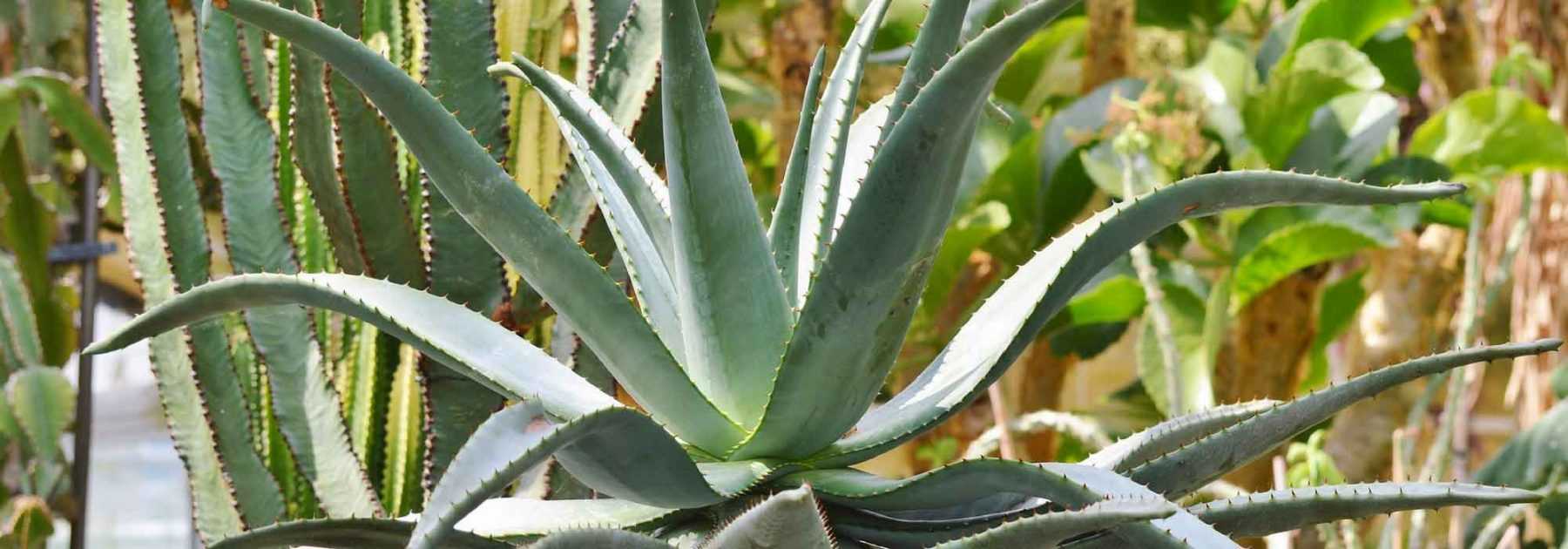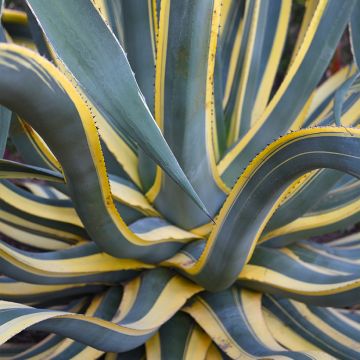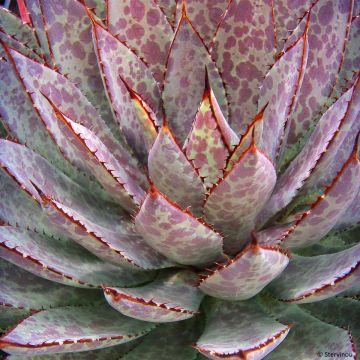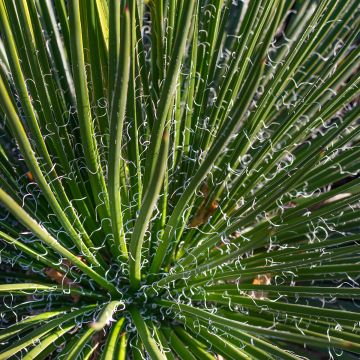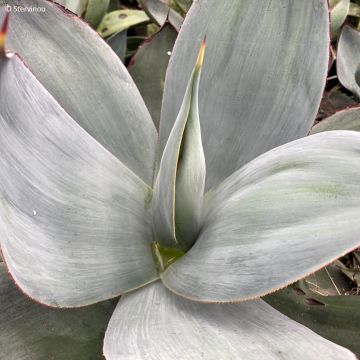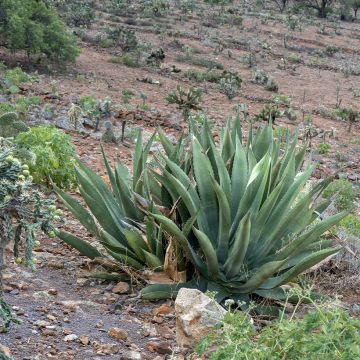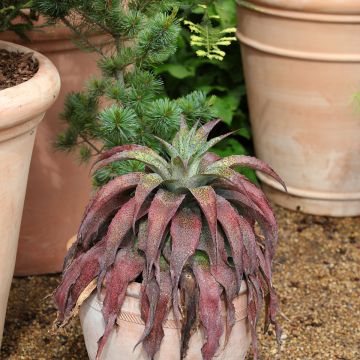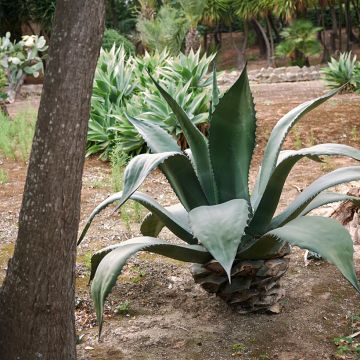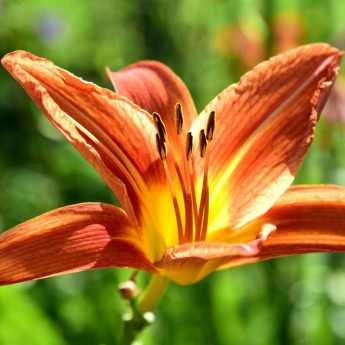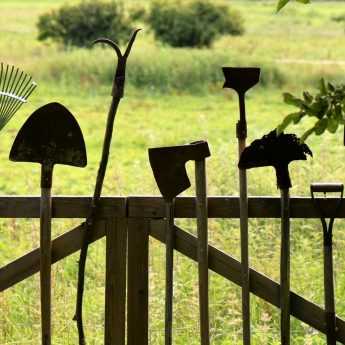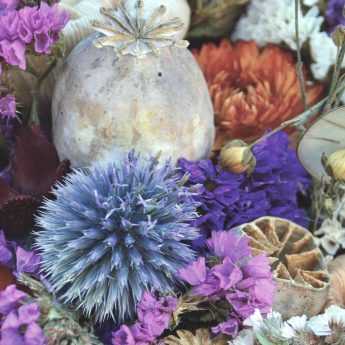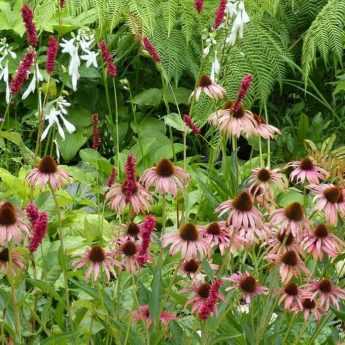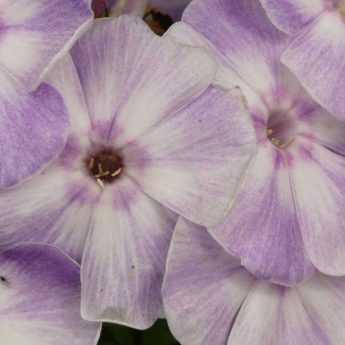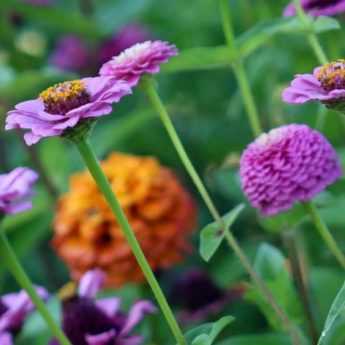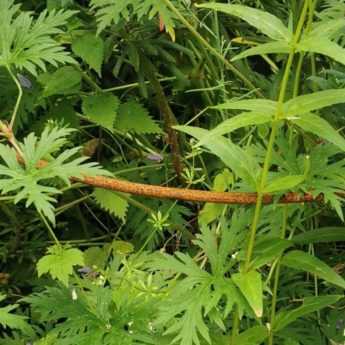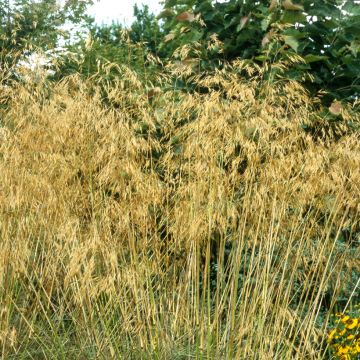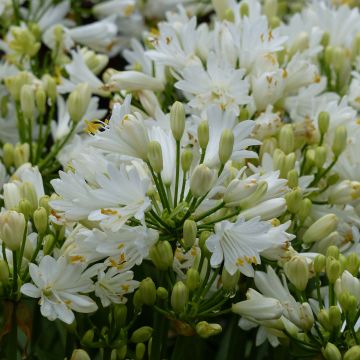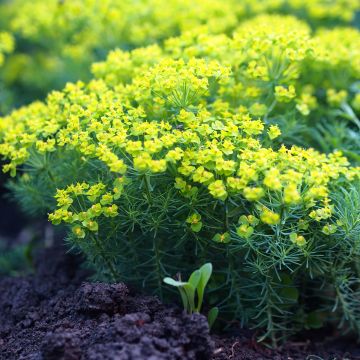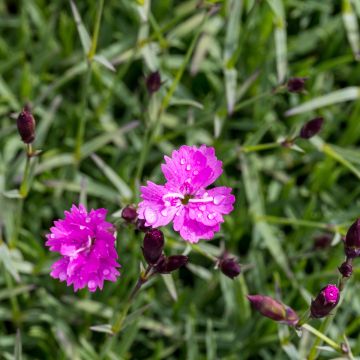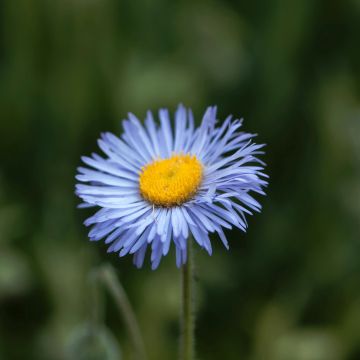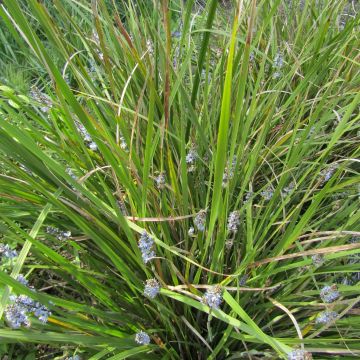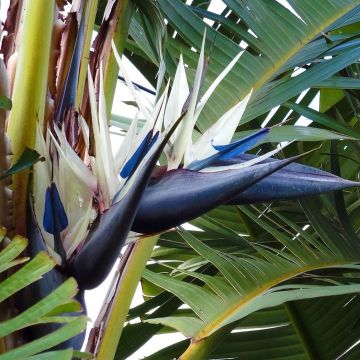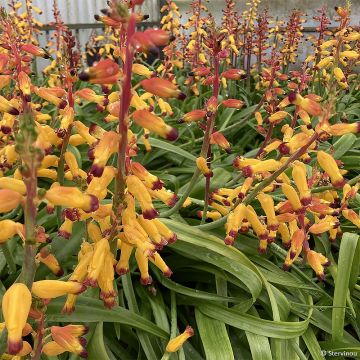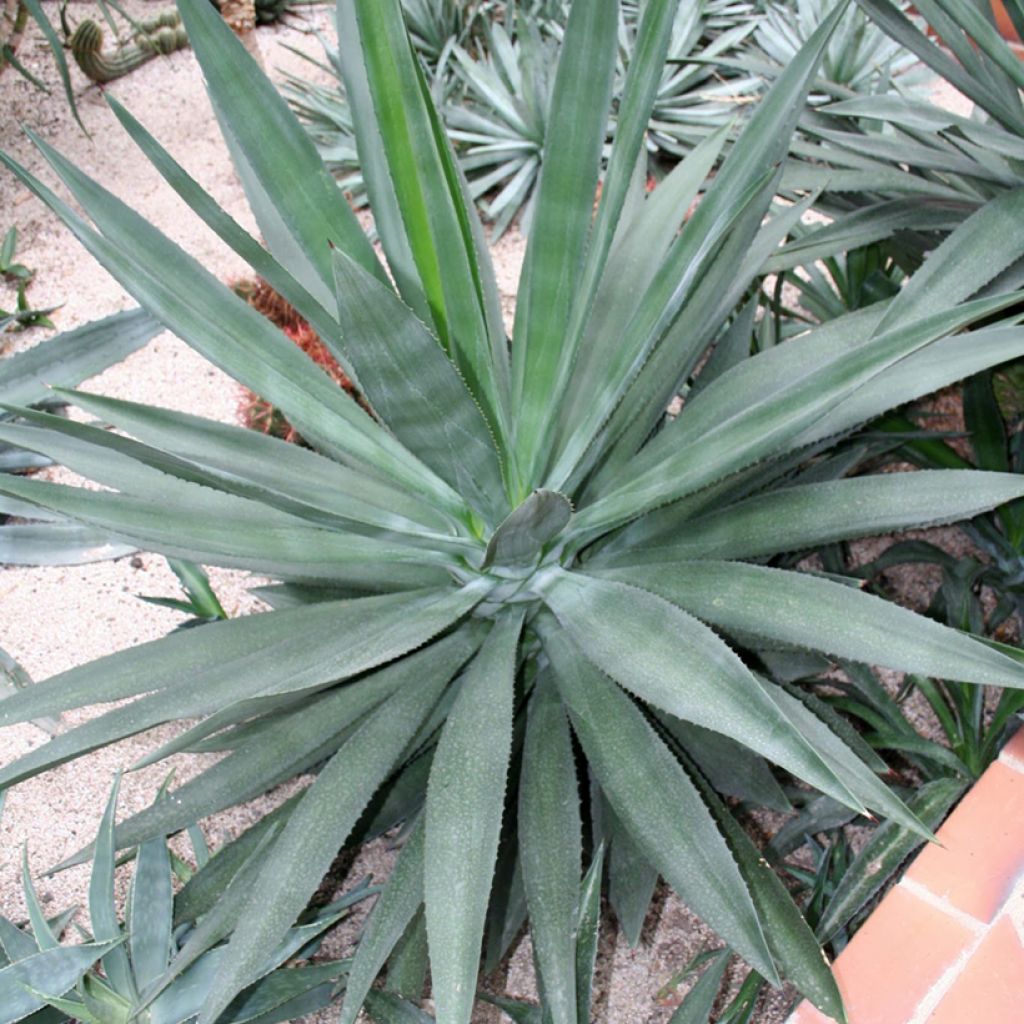

Agave fourcroydes - Henequen
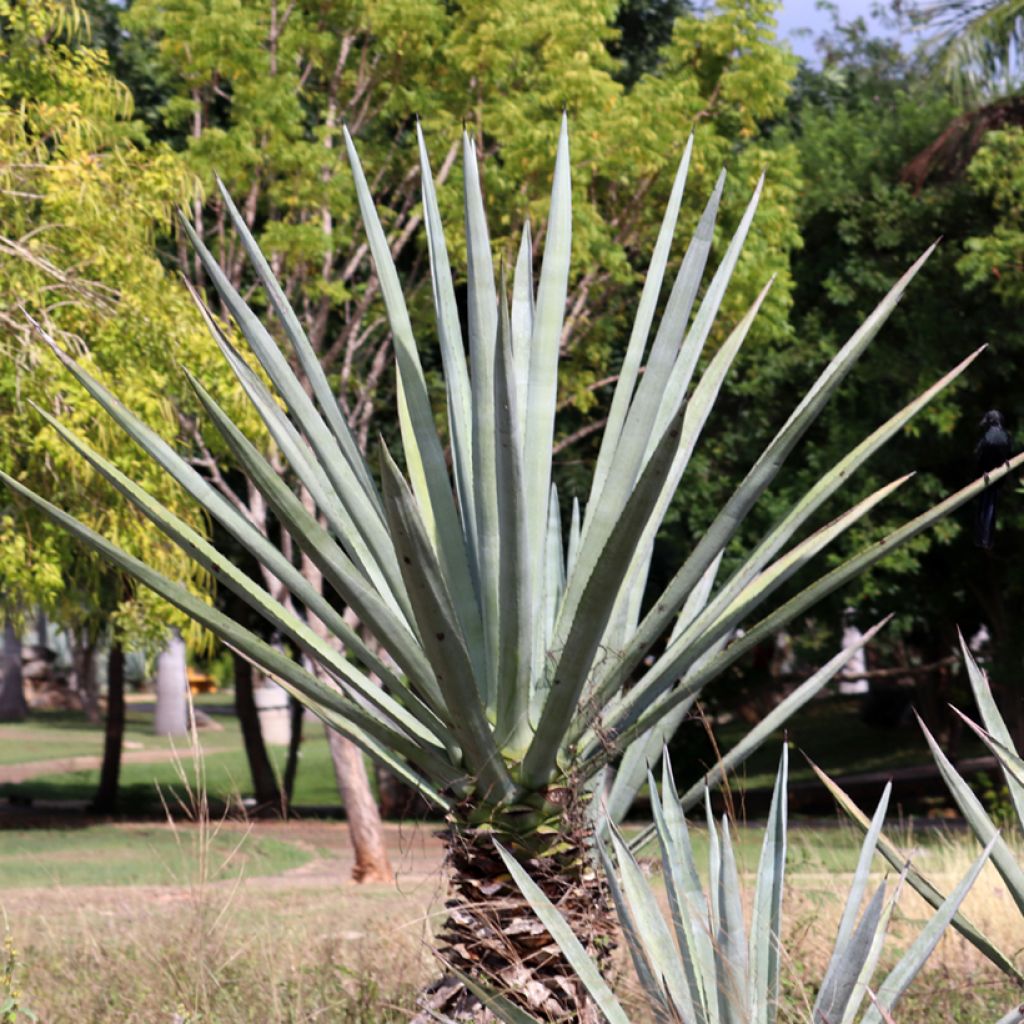

Agave fourcroydes - Henequen
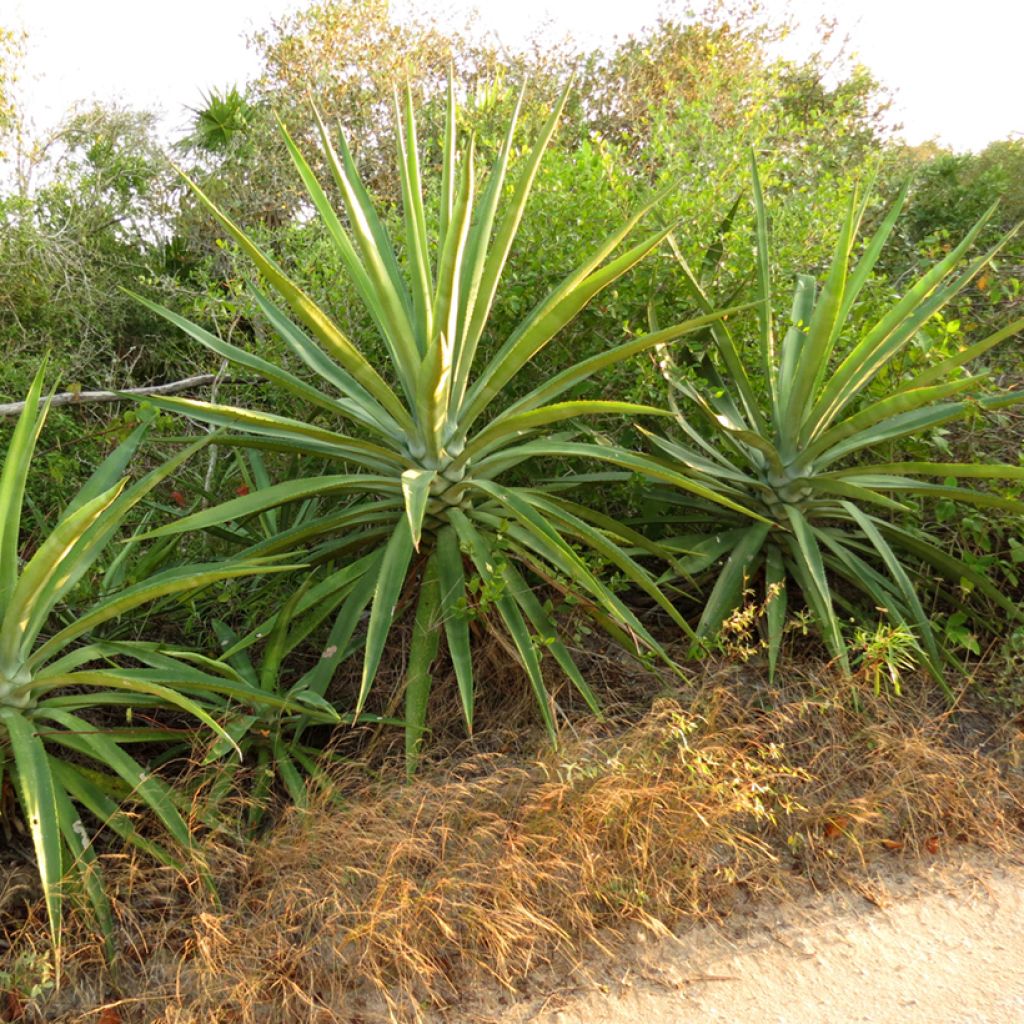

Agave fourcroydes - Henequen


Agave fourcroydes - Henequen
Agave fourcroydes
Agave fourcroydes
Home or relay delivery (depending on size and destination)
Schedule delivery date,
and select date in basket
This plant carries a 12 months recovery warranty
More information
We guarantee the quality of our plants for a full growing cycle, and will replace at our expense any plant that fails to recover under normal climatic and planting conditions.
Would this plant suit my garden?
Set up your Plantfit profile →
Description
Agave fourcroydes, or henequen, is a monumental rosette-forming perennial native to Yucatán, Mexico. Very similar to Agave sisalana (Sisal), this stunning species has also been cultivated for centuries for its strong fibres, used in rope-making. Today, it is valued in xeriscaping for its lush silhouette and high drought tolerance. Its long, rigid, dark green to grey leaves, edged with small sharp thorns, make a striking landscape feature. Highly sensitive to cold, it is only grown in the ground in warm climates and in pots elsewhere.
Agave fourcroydes belongs to the Asparagaceae family (subfamily Agavoidae). In its native habitat, its majestic silhouette thrives in arid and semi-arid zones, on limestone, rocky, well-drained soils. It is now widely cultivated in other tropical and subtropical regions, including Cuba, Central America, Colombia, Venezuela, and some dry areas of Africa and Asia. This plant is well-adapted to dry, hot climates thanks to the water stored in its thick leaves. However, its cold tolerance is very limited: it cannot survive prolonged temperatures below -3°C to -4°C, especially in damp soil. Its root system is deep and robust, allowing it to draw water from deep underground and stabilise soils. This species forms a broad, symmetrical rosette, reaching 2.5 to 3 m in height and 2 to 3 m in diameter when grown in the ground, but no more than 1.5 m in pots. Its very rigid and thick, dark green to greyish leaves, can grow up to 2 m long and are edged with small thorns and a sharp tip. Unlike other agaves such as Agave americana, A. fourcroydes produces very few offsets, limiting its spontaneous spread. It mainly reproduces via bulblets, which appear after flowering. Its growth is relatively slow but faster than many other agaves. Under optimal conditions, the plant reaches maturity in 8 to 12 years. It is also highly resistant to strong winds, making it suitable for coastal and exposed areas.
Like many agaves, henequen flowers only once in its lifetime, typically after 15 to 20 years. It then produces a spectacular flowering spike, which can exceed 6 m in height, adorned with greenish-yellow flowers in branching clusters. After flowering, the plant dies, leaving behind bulblets to ensure its legacy.
In warm climates with minimal frost, Agave fourcroydes thrives in a large arid rockery, where its massive rosette becomes a focal point until its spectacular flowering. It pairs beautifully with yuccas and other architectural plants like Dasylirion or Nolina, all adapted to poor soils and prolonged droughts. In colder regions, it makes a striking feature in a large pot on a terrace, placed in full sun and sheltered from wind. In such cases, it should be overwintered in a greenhouse or conservatory.
Agave fourcroydes vs Agave sisalana: What are the differences?
Though similar, Agave fourcroydes (henequén) and Agave sisalana (sisal) have several notable distinctions. Agave fourcroydes is generally larger, with stiffer, thicker, darker leaves featuring small lateral thorns. In comparison, A. sisalana has more flexible, lighter (blue-green to grey) leaves with almost no thorns except at the tip. Additionally, A. fourcroydes grows more slowly, flowers later (around 15-20 years, versus 10-12 years for A. sisalana), and produces even fewer offsets, mainly propagating via bulblets. Finally, their fibres differ: those of A. fourcroydes are coarser and stiffer, ideal for ropes and nets, while those of A. sisalana are softer and finer, used in textiles and crafts.
Agave fourcroydes in pictures
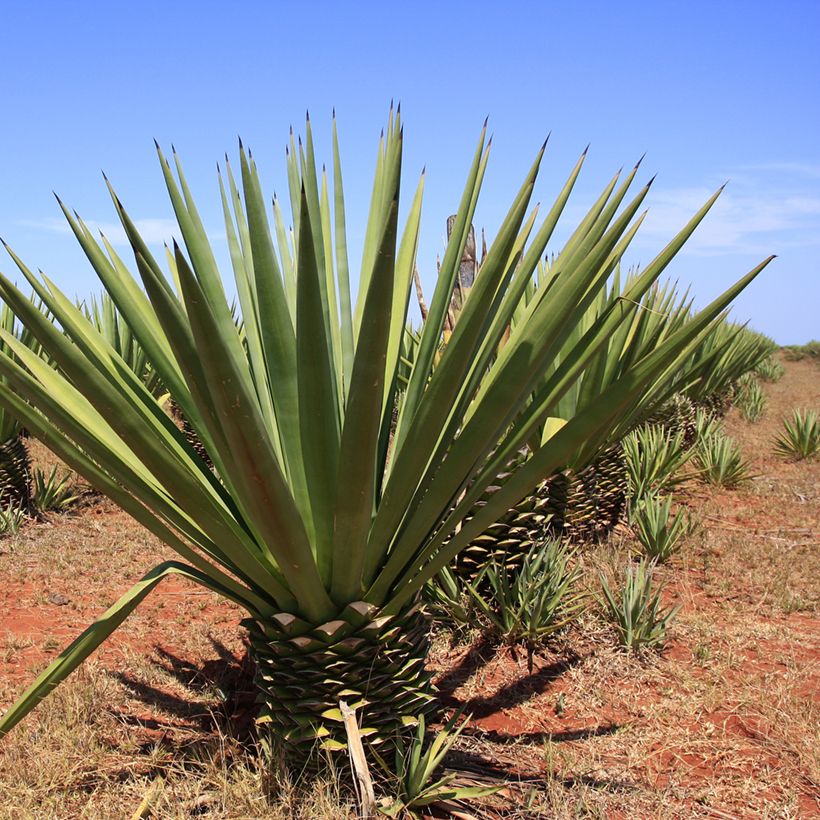

Flowering
Foliage
Plant habit
Botanical data
Agave
fourcroydes
Asparagaceae
Agave rigida var. elongata, Agave sullivanii, Agave fourcroydes var. espiculata
North America
Other Agave
View all →Planting and care
Agave fourcroydes can only be grown in the ground in warm and dry regions, where winter temperatures do not consistently drop below -3°C to -4°C. It requires very well-draining, stony, sandy, or limestone soil and full sun. To avoid any risk of root rot, it is best to plant it on a mound or slope, promoting rapid water drainage. It tolerates drought very well and can go without watering, but occasional watering in summer can stimulate its growth. In winter, it should never be watered.
In regions with cold or wet winters, Agave fourcroydes is better suited to pot cultivation. A large container with a minimum diameter of 40 to 50 cm is recommended for good root development. It should be placed in full sun, on a well-exposed terrace or balcony. The substrate must be very well-draining, composed of a mix of cactus compost, coarse sand, and pumice. Water lightly in summer, allowing the substrate to dry out between waterings, and completely stop watering in winter. When temperatures drop below zero, it is essential to bring the pot indoors to a bright, frost-free location, ideally between 5 and 10°C.
Maintenance is minimal. No watering is needed in winter. A single application of cactus fertiliser in spring can help stimulate growth. Repotting is advised every 3 to 5 years, preferably in spring, to refresh the substrate and provide more space for the roots. When handling, it is a good idea to wear thick gloves, as its leaves are edged with small thorns and its sap can be irritating.
Planting period
Intended location
Care
Planting & care advice
This item has not been reviewed yet - be the first to leave a review about it.
Similar products
Haven't found what you were looking for?
Hardiness is the lowest winter temperature a plant can endure without suffering serious damage or even dying. However, hardiness is affected by location (a sheltered area, such as a patio), protection (winter cover) and soil type (hardiness is improved by well-drained soil).

Photo Sharing Terms & Conditions
In order to encourage gardeners to interact and share their experiences, Promesse de fleurs offers various media enabling content to be uploaded onto its Site - in particular via the ‘Photo sharing’ module.
The User agrees to refrain from:
- Posting any content that is illegal, prejudicial, insulting, racist, inciteful to hatred, revisionist, contrary to public decency, that infringes on privacy or on the privacy rights of third parties, in particular the publicity rights of persons and goods, intellectual property rights, or the right to privacy.
- Submitting content on behalf of a third party;
- Impersonate the identity of a third party and/or publish any personal information about a third party;
In general, the User undertakes to refrain from any unethical behaviour.
All Content (in particular text, comments, files, images, photos, videos, creative works, etc.), which may be subject to property or intellectual property rights, image or other private rights, shall remain the property of the User, subject to the limited rights granted by the terms of the licence granted by Promesse de fleurs as stated below. Users are at liberty to publish or not to publish such Content on the Site, notably via the ‘Photo Sharing’ facility, and accept that this Content shall be made public and freely accessible, notably on the Internet.
Users further acknowledge, undertake to have ,and guarantee that they hold all necessary rights and permissions to publish such material on the Site, in particular with regard to the legislation in force pertaining to any privacy, property, intellectual property, image, or contractual rights, or rights of any other nature. By publishing such Content on the Site, Users acknowledge accepting full liability as publishers of the Content within the meaning of the law, and grant Promesse de fleurs, free of charge, an inclusive, worldwide licence for the said Content for the entire duration of its publication, including all reproduction, representation, up/downloading, displaying, performing, transmission, and storage rights.
Users also grant permission for their name to be linked to the Content and accept that this link may not always be made available.
By engaging in posting material, Users consent to their Content becoming automatically accessible on the Internet, in particular on other sites and/or blogs and/or web pages of the Promesse de fleurs site, including in particular social pages and the Promesse de fleurs catalogue.
Users may secure the removal of entrusted content free of charge by issuing a simple request via our contact form.
The flowering period indicated on our website applies to countries and regions located in USDA zone 8 (France, the United Kingdom, Ireland, the Netherlands, etc.)
It will vary according to where you live:
- In zones 9 to 10 (Italy, Spain, Greece, etc.), flowering will occur about 2 to 4 weeks earlier.
- In zones 6 to 7 (Germany, Poland, Slovenia, and lower mountainous regions), flowering will be delayed by 2 to 3 weeks.
- In zone 5 (Central Europe, Scandinavia), blooming will be delayed by 3 to 5 weeks.
In temperate climates, pruning of spring-flowering shrubs (forsythia, spireas, etc.) should be done just after flowering.
Pruning of summer-flowering shrubs (Indian Lilac, Perovskia, etc.) can be done in winter or spring.
In cold regions as well as with frost-sensitive plants, avoid pruning too early when severe frosts may still occur.
The planting period indicated on our website applies to countries and regions located in USDA zone 8 (France, United Kingdom, Ireland, Netherlands).
It will vary according to where you live:
- In Mediterranean zones (Marseille, Madrid, Milan, etc.), autumn and winter are the best planting periods.
- In continental zones (Strasbourg, Munich, Vienna, etc.), delay planting by 2 to 3 weeks in spring and bring it forward by 2 to 4 weeks in autumn.
- In mountainous regions (the Alps, Pyrenees, Carpathians, etc.), it is best to plant in late spring (May-June) or late summer (August-September).
The harvesting period indicated on our website applies to countries and regions in USDA zone 8 (France, England, Ireland, the Netherlands).
In colder areas (Scandinavia, Poland, Austria...) fruit and vegetable harvests are likely to be delayed by 3-4 weeks.
In warmer areas (Italy, Spain, Greece, etc.), harvesting will probably take place earlier, depending on weather conditions.
The sowing periods indicated on our website apply to countries and regions within USDA Zone 8 (France, UK, Ireland, Netherlands).
In colder areas (Scandinavia, Poland, Austria...), delay any outdoor sowing by 3-4 weeks, or sow under glass.
In warmer climes (Italy, Spain, Greece, etc.), bring outdoor sowing forward by a few weeks.


































